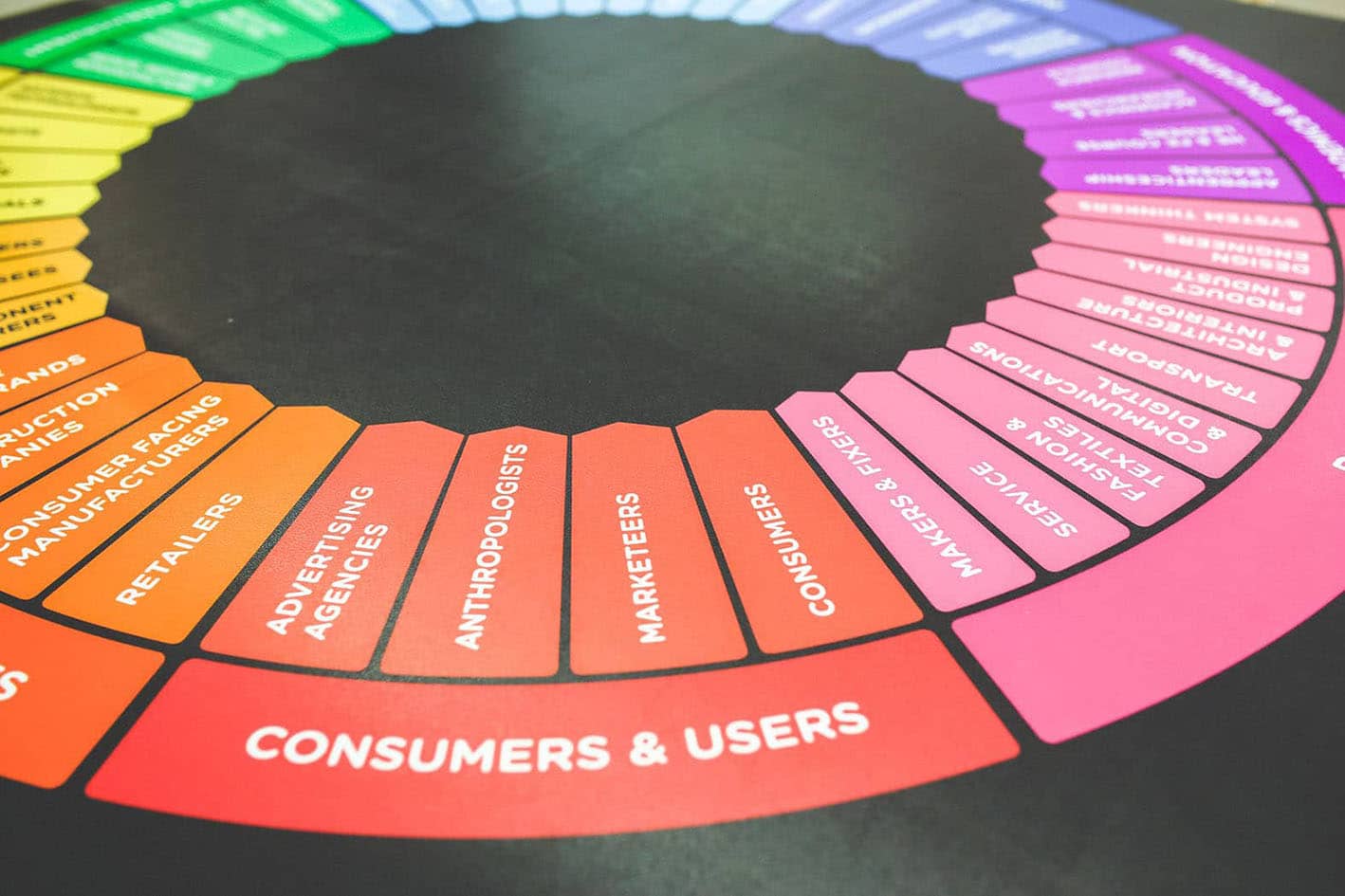AMA with Ben Austin of Absolute Digital Media | Vestd
Starting a new business can often be a gamble, but with a lot of hard work and perseverance, some founders have managed to beat the odds and win.
Manage your equity and shareholders
Share schemes & options
Equity management
Migrate to Vestd
Company valuations
Fundraising
Launch funds, evalute deals & invest
Special Purpose Vehicles (SPV)
Manage your portfolio
Model future scenarios
Powerful tools and five-star support
Employee share schemes
Predictable pricing and no hidden charges
For startups
For scaleups & SMEs
For larger companies
Ideas, insight and tools to help you grow
5 min read
 Rebecca Appleton
:
06 February 2024
Rebecca Appleton
:
06 February 2024

Contents
Last updated: 1 October 2024.
Digitisation. Digital revolution. The digital age. Most of us have read or heard these words so many times that they’ve begun to lose all meaning.
Often, they’re slipped into articles and blog posts purely for SEO reasons. (We didn't start off with that sentence for SEO reasons, honest).
Empty words aside, the impact of digitisation is immense. Perhaps without us even realising it, digital tools have pervaded every aspect of the 9-to-5. It’s become the norm in everything from job seeking to pension schemes, from holiday leave to filing taxes.
When was the last time you - or anybody you know - applied for a job by mailing their printed CV off to the HR department?
How many businesses are still using paper forms to request holiday leave, or to file their taxes, knowing that a misplaced piece of paper may cost them dearly?
The short answer is not many. And that begs the question, why are those last few stragglers still holding on to inefficient, easily lost, hard-to-search paper?
Why would anyone want to resist the digital shift in HR? As it turns out, there are several reasons.
These reasons can be separated into two broad camps. In the left corner, we have logistical barriers. On the right, mental blocks. The reluctance or hesitancy of some companies to embrace digitisation can be attributed to:
Organisations with existing legacy systems may find it challenging to integrate more up-to-date digital solutions. The fear of disruption to ongoing operations and the perceived complexity of transitioning from older systems are both powerful deterrents.
Yes, some think, digitisation promises to save time in the long run - but is it worth it if weeks or even months are lost trying to make it work?
The upfront costs associated with implementing digital solutions, including software, hardware, and training, can be a significant barrier.
Some companies may perceive digitisation as a substantial financial investment without immediate returns, even if it saves money in the long run.
Think of it like cooking: it is far cheaper to make your dinner from scratch each day. You don’t need to be a MasterChef, but you will need spices, knives, pans, and a whole host of other costly equipment to unlock those savings.
Preparing food that’s edible, tasty, and nutritious is lower cost in the long run. Buying a ready meal is cheaper right now. That’s a conundrum that many HR teams face. And as we all know, upfront cost can be a powerful argument against taking action when budgets are squeezed.
In some cases, decision-makers within organisations may have a limited understanding of the benefits and potential that comes with digitisation.
A lack of awareness about how digital tools can enhance efficiency, reduce costs, and drive innovation may contribute to resistance. Companies with deeply ingrained traditional or bureaucratic cultures may face challenges in fostering an environment that embraces that change.
Resistance within the workforce can slow down or impede the adoption of digital solutions. Reasons often include a fear of the unknown, worries it'll lead to a higher workload and a general aversion to new technology over fears of job security.
30% of respondents in a PwC survey said they’re afraid that automation and advances in AI could make their role obsolete.
According to research by Allianz, cyber risks such as ransomware attacks and data breaches are the number one risk factor for businesses globally.
The very real prospect of unauthorised access to sensitive information, or leaked data landing on the internet is enough to put anybody off.
Industries with stringent regulatory requirements may also be cautious about adopting digital solutions due to rigorous compliance standards.
A lack of skilled staff is one of the most common reasons organisations give for not pursuing digitisation projects.
Some companies may not be put off by digitisation - they may be eager to get one with it but don’t know where to start from a practical perspective.
With so many competing products, identifying the most suitable solutions can feel like Mission Impossible. This paralysis only serves to delay project implementation and digital deployments.
Long-term benefits may be overshadowed by the urgency of immediate concerns, so more pressing issues are prioritised ahead of digitisation initiatives.
These are all valid reasons. But how can they be overcome?
Overcoming these barriers requires a strategic approach that addresses both the logistical challenges and the mental shifts required for successful digitisation.
The change must be viewed as an opportunity rather than a risk. The upskilling of staff as an investment rather than an expense.
Those who decide not to embrace digital technologies risk being left behind. This is especially true in the field of HR, where teams face myriad complex challenges.
From bridging the talent gap with successful recruitment strategies and retaining high-performing employees to boosting morale and taking the lead on disciplinary issues, HR teams face pressure from all sides.
Digital tools can take some of the load when carefully selected and properly deployed.
From personal details to employment history, digital records accelerate the efficient management and retrieval of employee data, improving accuracy and ensuring compliance with data protection regulations.
While we're on the subject, it won't be long before all Companies House filings are digital anyway.
With the right tools, HR professionals can more easily manage a larger volume of applications, screen applicants, track candidate progress, collaborate with hiring managers and even schedule interviews.
This reduces the time-to-hire and improves the overall quality of hires. That translates to happier, more capable teams and less staff churn.
From electronic document signing to training automation, onboarding tools save time and ensure a smooth onboarding process, helping new hires hit the ground running. We use CharlieHR and Coda to share knowledge and resources in one place.
Automated time-tracking tools empower employees to clock in and out electronically. That data can then be used by HR to more easily calculate hours worked, manage leave requests, and ensure accurate payroll processing.
The data can also be analysed and interpreted to track changes over time, highlight areas for improvement and implement efficiencies.
Tools for ongoing feedback, real-time assessments, and goal tracking enhance employee development and foster a culture of continuous improvement. This boosts morale, aids retention and prevents the loss of valuable knowledge.
We use CharlieHR to schedule annual performance reviews.
Research shows that your benefits package has never been more important. Tools like Perkbox and Mo, make employee rewards super accessible.
That transparency is key, otherwise, employees are unlikely to make the most of their benefits, which would be a waste of money for you.
Digital surveys and feedback tools make it quicker and easier to track satisfaction, engagement, and overall sentiment and ensure that no feedback is ever lost. Observations and recommendations shared by leavers in exit interviews can also be recorded this way.
We use CharlieHR to send out anonymous surveys and polls. The insights we gain paint a clearer picture of how everybody is feeling.
Employee share schemes are proven to unlock serious benefits, but there is a degree of admin involved. If share scheme management has fallen into your lap, let Vestd take a load off.
Generate digital docs, secure signatures electronically, process leavers at the click of a button and automate repetitive tasks. Plus, send automated vesting reminders and give employees access to their own shareholder portal to maximise engagement.
Book a free, no-obligation consultation with an equity specialist to find out more.
However daunting the hurdles may appear, embracing digital tools can make a positive difference to performance, efficiency and productivity. Why work harder when you could work smarter?

Starting a new business can often be a gamble, but with a lot of hard work and perseverance, some founders have managed to beat the odds and win.

Commitment issues? We get it. But we're convinced that equity management software like ours makes life simpler.

You may have heard of Making Tax Digital. It’s the UK Government’s bold initiative to revolutionise tax accounting, impacting millions. They made a...